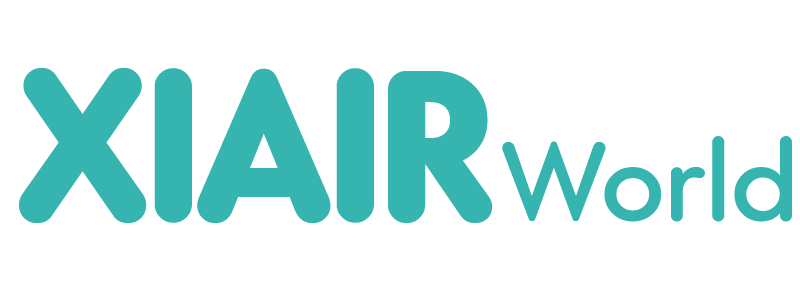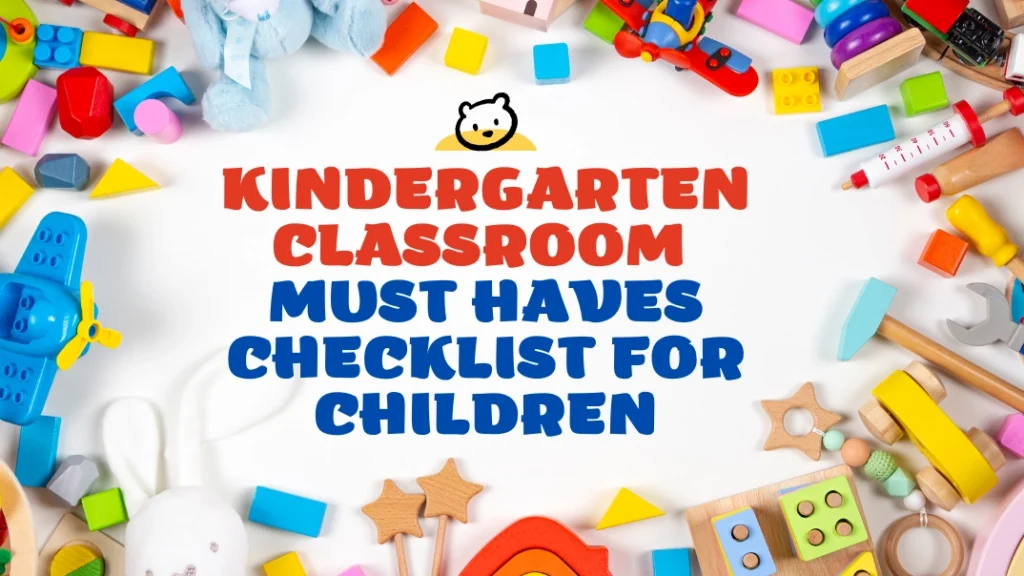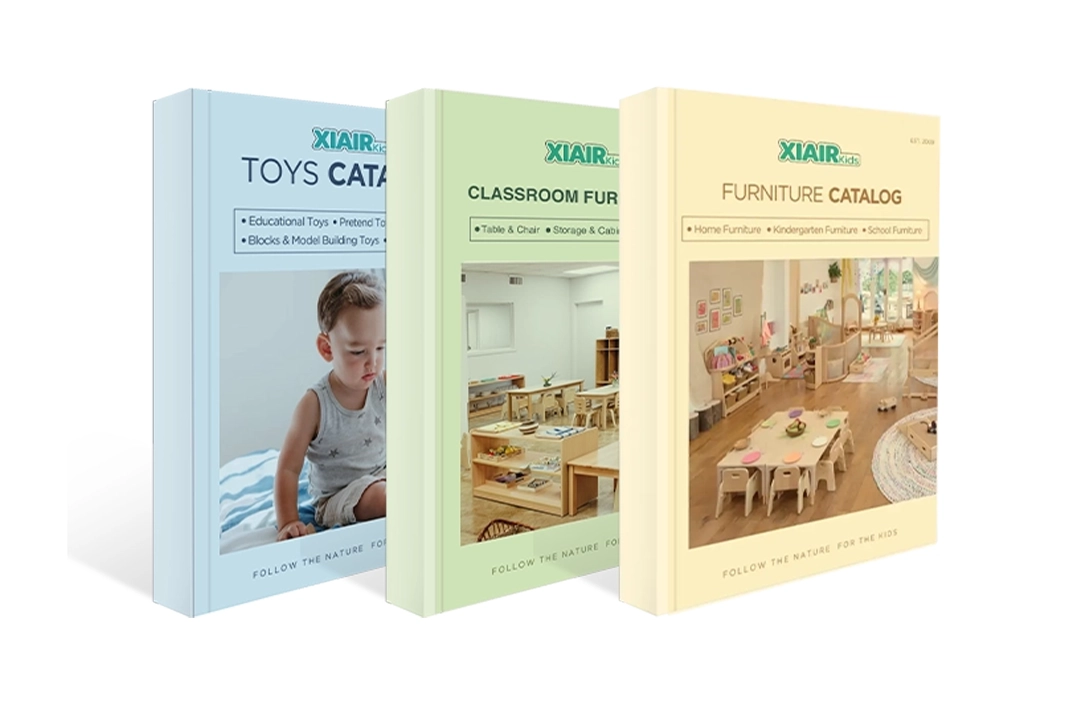Aménager une salle de classe, qu'il s'agisse d'une école maternelle, d'une garderie ou d'un jardin d'enfants, peut s'avérer complexe. Avec autant de choix et un budget limité, comment savoir quels articles sont essentiels ? De nombreux nouveaux enseignants ou éducateurs de la petite enfance se démènent pour créer un environnement d'apprentissage efficace sans avoir une liste claire des fournitures scolaires indispensables.
Pire encore, négliger des éléments clés dans l'aménagement de votre classe de maternelle peut engendrer désordre, chaos et même des problèmes de sécurité. Une salle de classe mal préparée peut perturber l'apprentissage, entraver les routines et frustrer les enseignants et les élèves. Sans les éléments essentiels d'une classe de maternelle, même l'enseignant le plus passionné peut avoir du mal à dispenser un enseignement stimulant et structuré.
C'est pourquoi nous avons compilé ce guide complet des indispensables pour les classes de maternelle et de prématernelle, organisé pour vous aider à concevoir une classe fonctionnelle, inspirante et bien gérée. Que vous aménagiez une crèche, équipiez une école maternelle ou lanciez votre toute première classe de maternelle, ce guide vous aidera à vous concentrer sur l'essentiel : créer un environnement sûr, ludique et propice au développement des enfants, où ils pourront s'épanouir.
Introduction
Maintenant que nous avons Après avoir examiné l'importance d'une salle de classe bien aménagée, découvrons ensemble ce dont vous avez besoin. Ce guide est divisé en sections pratiques mettant en avant les éléments essentiels des classes de maternelle et de prématernelle. soigneusement choisis pour soutenir les routines quotidiennes des jeunes apprenants.
Nous aborderons chaque élément de la classe : espaces d'apprentissage, zones de jeu, systèmes d'organisation, dispositifs de sécurité, etc., afin de créer un espace fonctionnel, accueillant et facile à gérer. Que vous enseigniez à des tout-petits ou à des enfants de maternelle, ces indispensables vous aideront à créer une classe adaptée à vos besoins et à ceux de vos élèves.
Les indispensables des classes de maternelle et de jardin d'enfants par zone
Concevoir une classe de petite enfance implique de penser au-delà des fournitures individuelles et de créer des zones propices à différents types d'apprentissage, de mouvement, de créativité et d'attention. En organisant votre classe en zones fonctionnelles, vous pouvez mieux répondre aux besoins des élèves de maternelle et de jardin d'enfants tout en simplifiant le quotidien des enseignants.
Dans les sections ci-dessous, nous avons classé les éléments essentiels des classes de maternelle et de prématernelle par zone. Des espaces d'apprentissage aux coins calmes, en passant par les rangements et les jeux sensoriels, chaque partie de la pièce joue un rôle dans la façon dont les enfants explorent, interagissent et grandissent.
Mobilier essentiel pour la classe de maternelle : indispensables pour les enfants
L'aménagement d'une classe de maternelle commence par le mobilier ; pas n'importe lequel, mais des meubles qui favorisent activement le mouvement, l'interaction et l'apprentissage autonome. Pour les jeunes enfants, le mobilier n'est pas seulement un endroit où s'asseoir : c'est un outil pour développer des routines, une perception spatiale et la confiance en soi. Cette section explore les meubles essentiels des éléments indispensables qui aident les enseignants à gérer leur journée et permettent aux élèves de se sentir en sécurité et engagés.
- Tables et chaises pour enfants
Des sièges adaptés aux enfants sont essentiels. Ils permettent aux enfants d'être assis confortablement, les pieds au sol, favorisant ainsi une bonne posture et une meilleure concentration. Choisissez des tables résistantes aux bords arrondis et aux pieds réglables pour s'adapter à différentes activités : travail en groupe, goûter ou projets pratiques. Ces tables font partie des indispensables des classes préscolaires, mais aussi des plus performantes, car elles ancrent physiquement les espaces d'apprentissage. - Tapis Circle Time
Un espace dédié aux moments de groupe est essentiel à l'apprentissage en groupe et à la structure de la classe. Un grand tapis moelleux orné de repères visuels (comme des lettres de l'alphabet ou des formes) offre aux enfants un espace personnel et facilite l'organisation. Les tapis de groupe favorisent également la routine en classe et sont reconnus comme un élément indispensable au développement socio-émotionnel et à l'apprentissage de la lecture et de l'écriture. - Options de sièges flexibles
Les salles de classe d'aujourd'hui doivent s'adapter à des styles d'apprentissage et des besoins sensoriels variés. Proposez des poufs, des tabourets oscillants, des coussins de sol et des balancelles. Ces indispensables en maternelle offrent aux élèves la possibilité de choisir leur mode d'engagement, tout en favorisant les pauses, la concentration et l'autonomie, ce qui est particulièrement important dans les classes d'éducation spécialisée. - Bureau du professeur et espace de travail privé
Souvent négligé, l'espace enseignant est pourtant un centre de commandement essentiel. Il doit comprendre un tiroir sécurisé, un espace de travail plat pour la planification et un espace de rangement à proximité pour les dossiers, les évaluations et les effets personnels. Pour les nouveaux enseignants, c'est un élément essentiel de la salle de classe, contribuant à réduire le chaos quotidien. - Bancs de rangement et séparateurs de pièces
Ces éléments polyvalents délimitent les zones de classe tout en offrant du rangement. Utilisez des bancs bas avec des bacs en dessous pour ranger les outils pédagogiques ou les effets personnels. Des étagères ouvertes ou des cloisons mobiles avec casiers permettent de diviser l'espace en espaces d'apprentissage tout en gardant tout visible et accessible. - Mobilier de jeu dramatique (facultatif mais idéal)
Les petits ustensiles de cuisine, les théâtres de marionnettes et les berceaux pour poupées contribuent à créer des occasions de jeu enrichissantes. Bien qu'ils ne soient pas toujours considérés comme « essentiels », de nombreux éducateurs expérimentés les considèrent comme indispensables pour les environnements de classe de maternelle favorisant l'imagination et le développement social.
Une salle de classe bien aménagée ne se limite pas à une apparence soignée : elle fonctionne harmonieusement, minimise les transitions et répond au besoin de chaque enfant de bouger, de s'engager et d'appartenir. Investir dans le bon équipement dès le départ, pour les enseignants débutants comme expérimentés, transforme la salle de classe en un véritable partenaire pédagogique.
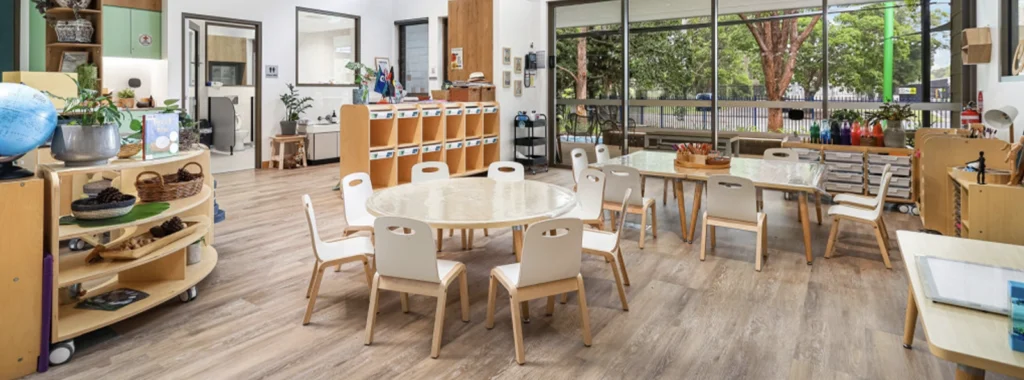
Solutions de rangement et d'organisation pour les essentiels de la classe
L'organisation est le pilier d'une classe de petite enfance bien gérée. Lorsque le matériel, les effets personnels et les outils d'apprentissage sont rangés de manière claire et accessible, les élèves savent à quoi s'attendre et les enseignants gagnent un temps précieux. Qu'il s'agisse de préparer une classe de maternelle ou de réaménager l'espace de votre maternelle, ces indispensables en matière d'organisation sont la clé d'une journée sereine et sans stress.
- Étagères ouvertes
Des étagères robustes et basses permettent aux enfants d'accéder aux jouets, aux livres et aux fournitures de manière autonome. Cela favorise le sens des responsabilités et l'indépendance, des compétences essentielles à tout âge. Choisissez des étagères bien visibles pour surveiller leur utilisation et classez-les par zone d'activité pour éviter toute confusion. Ce sont des éléments incontournables pour l'aménagement d'une classe de maternelle.
- Casiers pour le rangement personnel
Chaque enfant devrait disposer d'un casier ou d'un casier étiqueté pour ranger ses sacs à dos, ses manteaux et ses dossiers quotidiens. Ces casiers réduisent les confusions et encouragent la routine. Les classes de maternelle sont également idéales pour enseigner l'organisation, une habitude fondamentale de la vie.
- Bacs et paniers étiquetés
Utilisez des bacs avec des mots et des images pour aider les enfants illettrés à identifier rapidement où ranger les objets. Cela favorise l'apprentissage précoce de la lecture et de l'écriture tout en optimisant le temps de rangement. Les bacs sont des éléments incontournables de l'organisation en classe, particulièrement utiles dans les classes d'éducation spécialisée où les repères visuels sont essentiels.
- Chariots de fournitures roulants
Les salles de classe flexibles nécessitent des outils mobiles. Un chariot à trois niveaux peut accueillir des fournitures artistiques un jour et du matériel de manipulation mathématique le lendemain. Pour les petits espaces, ces chariots offrent une grande utilité sans encombrement permanent : un indispensable pour la polyvalence des classes de maternelle.
- Rangement central à code couleur
Attribuez une couleur à chaque espace d'apprentissage (par exemple, bleu pour les blocs, vert pour la lecture) et utilisez des bacs assortis. Cela facilite la fluidité de la classe et favorise l'apprentissage autonome. C'est l'une des astuces d'aménagement de classe les plus simples et les plus efficaces pour les nouveaux enseignants.
- Zone des organisations d'enseignants
N'oubliez pas vos propres besoins : organiseurs de dossiers, étagères à classeurs et tiroirs verrouillables pour les données d'évaluation ou les documents sensibles sont essentiels. Il s'agit d'un élément essentiel pour les enseignants en classe, favorisant l'efficacité et protégeant la confidentialité.
Avec des systèmes efficaces, l'organisation de la classe devient moins une question de rangement qu'une question d'enseignement de la structure, de la responsabilité et de l'autonomie. Dans les classes de petite enfance, votre environnement est aussi important que vous : aménagez-le judicieusement.
Ne vous contentez pas de rêver, concevez-le ! Discutons de vos besoins en mobilier sur mesure !
Livres indispensables pour une bibliothèque de classe de maternelle
Une bibliothèque de classe est bien plus qu’un simple coin tranquille : c’est l’endroit où les jeunes apprenants acquièrent des compétences linguistiques fondamentales, développent leur imagination et nourrissent un amour de la lecture qui durera toute leur vie. Créer un environnement riche en livres est une priorité absolue pour les classes préscolaires et maternellesUne bibliothèque bien pensée favorise l’alphabétisation, le développement émotionnel et l’exploration indépendante, ce qui en fait l’un des éléments essentiels de la salle de classe.
- Livres d'images adaptés à l'âge
Des livres au langage simple, aux illustrations vibrantes et aux thèmes pertinents stimulent l'intérêt des enfants d'âge préscolaire et de maternelle. Parmi les incontournables, on trouve des classiques comme La Chenille qui fait des trous, Ours brun et Chica Chica Boom BoomCe sont des livres incontournables et non négociables pour les environnements de classe de maternelle où l'alphabétisation commence.
- Livres interactifs et sensoriels
Les livres à rabats, les pages tactiles et les boutons sonores donnent vie aux histoires. Ces formats sont parfaits pour les classes de maternelle, aidant les enfants à développer leur motricité et leur capacité d'attention tout en s'amusant avec les livres.
- Livres thématiques et saisonniers
Faites tourner les livres en fonction des thèmes ou des saisons de la classe : feuilles d'automne, émotions, famille ou vacances. Cela permet de renouveler la bibliothèque et de soutenir les cours en cours. Pour les enseignants, une étagère thématique tournante offre une flexibilité pédagogique incroyable.
- Livres mettant en avant la diversité et l'inclusion
Les livres qui reflètent différentes cultures, capacités et types de familles aident les élèves à se voir eux-mêmes et à voir les autres dans les histoires. Ces histoires renforcent l’empathie et normalisent les différences dans les classes d’éducation spécialisée ou les environnements inclusifs..
- Espace de lecture confortable et accessible
Aménagez votre bibliothèque avec des sièges moelleux : poufs, tapis ou coussins de sol. Utilisez des étagères basses et orientées vers l'avant pour que les livres soient visibles et accueillants. Ajoutez de petites touches décoratives comme des lampes, des peluches ou des paniers à histoires. Ces éléments environnementaux sont également des incontournables de la décoration de la classe, notamment pour créer une ambiance apaisante.
- Outils et accessoires de lecture à voix haute
Des outils pour l'heure du conte, comme des marionnettes, des storyboards et des personnages en feutrine, peuvent enrichir les séances de lecture à voix haute. Cet enseignant doit prévoir du temps de lecture en classe pour favoriser la compréhension et la participation.
Une bibliothèque de classe performante ne nécessite pas des centaines de livres, mais les bons. L'objectif est de créer un espace aussi stimulant qu'éducatif. Et n'oubliez pas de consulter notre guide complet pour créer des espaces inspirants : Idées de tableaux d'affichage pour les écoles maternelles
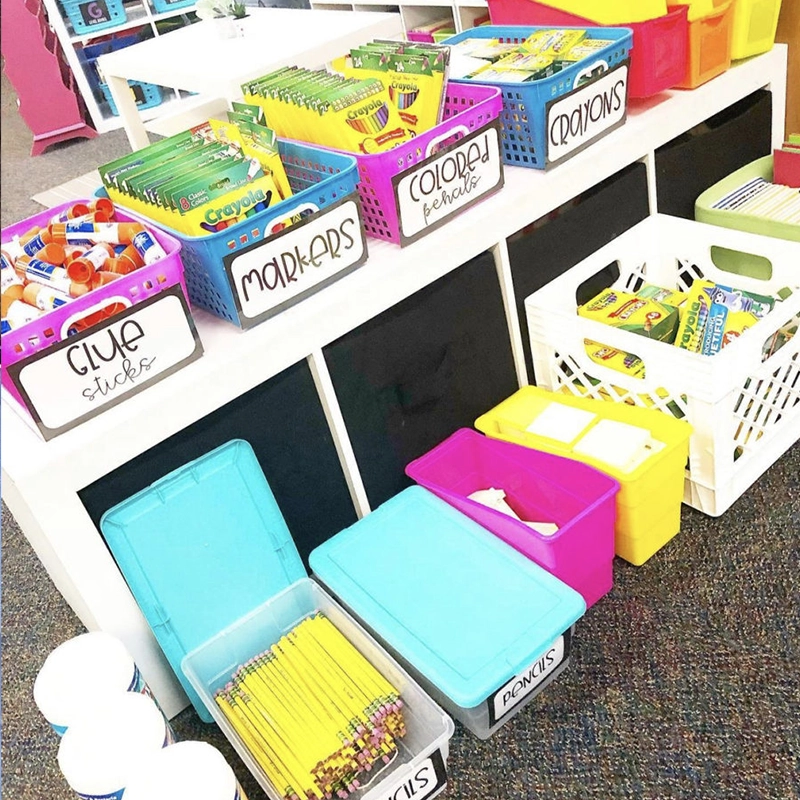

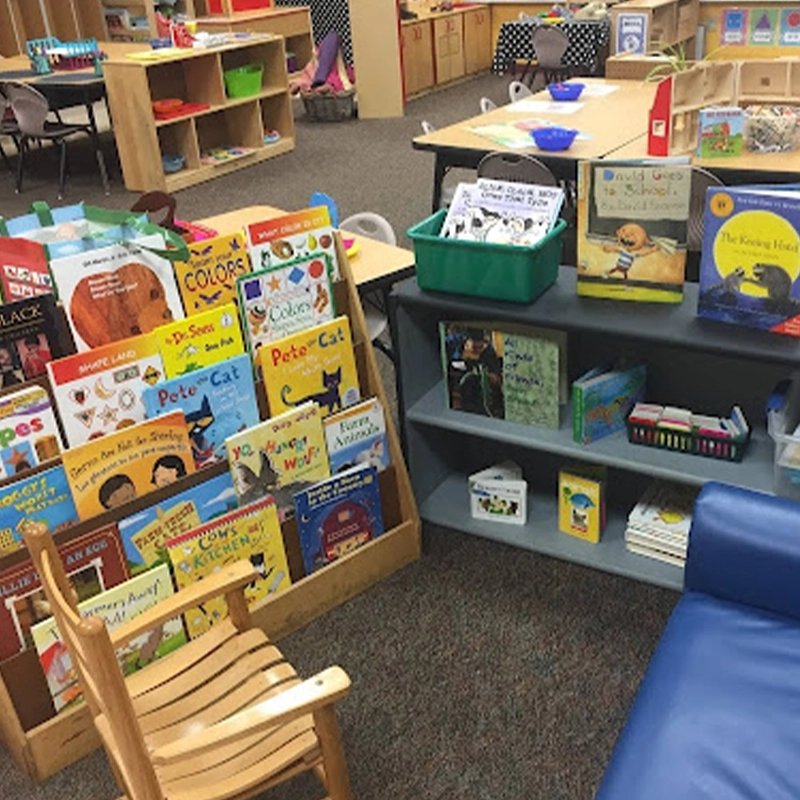
Papeterie et fournitures indispensables pour les enseignants de maternelle
Pour une classe bien organisée et un cours fluide, il y a un enseignant bien préparé. Disposer du matériel adéquat est un élément essentiel, souvent négligé, pour les enseignants débutants, notamment ceux qui jonglent avec de multiples responsabilités. Ces outils ne se contentent pas de faciliter la gestion de la classe : ils favorisent la créativité, la communication et le calme.
- Ciseaux, bâtons de colle et crayons de couleur sans danger pour les enfants
Basique ne veut pas dire facultatif. Ces outils sont utilisés quotidiennement pour les projets artistiques, les fiches d'exercices et l'apprentissage pratique. Assurez-vous d'en avoir suffisamment pour le travail en groupe et que tout soit adapté à l'âge des enfants : pas de pointes pointues, pas de colle toxique. Ces articles sont parmi les fournitures scolaires indispensables dans tout contexte d'apprentissage précoce.
- Tableaux effaçables à sec et marqueurs
Les mini-tableaux blancs sont parfaits pour les activités en petits groupes, les exercices de phonétique ou les évaluations rapides. Prévoyez suffisamment de marqueurs à faible odeur de couleurs assorties. Pour les enseignants, un grand tableau blanc magnétique est indispensable dans une classe de maternelle.
- Caddies et plateaux de fournitures
Utilisez des compartiments pour ranger crayons, ciseaux et marqueurs de manière organisée et mobile. Le codage couleur par table ou par centre facilite le rangement et favorise le partage des responsabilités. Ces rangements sont des indispensables de l'organisation de la classe, souvent négligés, qui permettent de gagner du temps et de l'énergie.
- Autocollants, tampons et tableaux de récompenses
Le renforcement positif est facilité par de petites incitations visuelles. Utilisez des tampons pour la participation, des autocollants pour le rangement ou des tableaux pour suivre les objectifs comportementaux. Ces outils sont indispensables pour la gestion de classe, en particulier pour les nouveaux enseignants qui créent des routines de toutes pièces.
- Outils de bureau et fournitures de planification pour les enseignants
Une agrafeuse, une perforatrice, des trombones, un dévidoir de ruban adhésif, un planificateur de cours et des post-it peuvent paraître évidents, mais leur absence peut compliquer votre journée. De nombreuses listes d'équipements indispensables pour les nouveaux enseignants incluent ces éléments, car ils sont souvent oubliés lors de la mise en place initiale.
- Dossiers et étiquettes nominatives pour étudiants
Des dossiers étiquetés par enfant ou par jour permettent d'organiser les travaux terminés, les notes des parents et les formulaires de classe. Des étiquettes nominatives ou des plaques de bureau plastifiées renforcent la reconnaissance des noms, les routines de classe et l'apprentissage de la lecture et de l'écriture, ce qui en fait des indispensables discrets mais efficaces en maternelle.
Quand les petites choses sont prêtes, les grandes choses arrivent. Avec le matériel adéquat, élèves et enseignants peuvent se concentrer sur l'apprentissage, et non sur la logistique. Vous pouvez également consulter notre Liste de fournitures pour l'école maternelle pour une version imprimable de ces essentiels du quotidien.
Fournitures artistiques et outils de créativité pour les classes de maternelle et de jardin d'enfants
Les activités artistiques en maternelle et en maternelle ne sont pas seulement une question de plaisir : elles permettent également de développer la motricité fine, l'expression et la capacité à résoudre des problèmes. Un coin créatif bien aménagé favorise l'exploration par l'enfant tout en renforçant les étapes clés de son développement. Lors de l'aménagement de votre classe, ces indispensables sont essentiels pour un apprentissage créatif structuré et spontané.
- Crayons, marqueurs et crayons de couleur
Ces éléments de base permettent l'expression par la couleur, la forme et la texture. Choisissez des options lavables et non toxiques, et incluez des crayons à prise épaisse pour les plus jeunes. Ce sont des fournitures scolaires essentielles, utilisées quotidiennement pour toutes les matières et les activités artistiques.
- Peintures, pinceaux et palettes
Les peintures à la détrempe, les plateaux d'aquarelle et les pinceaux de différentes tailles aident les enfants à explorer de nouvelles textures et à mélanger. Utilisez des palettes en plastique ou des assiettes en carton pour mélanger. La peinture n'est pas seulement artistique : elle favorise le développement sensoriel et l'expression émotionnelle, ce qui en fait un incontournable des classes de maternelle.
- Colle, ciseaux et bâtons d'artisanat
Ces outils tactiles aident à développer la force et la coordination des mains. Assurez-vous que les ciseaux ont des bouts arrondis et que les bâtons de colle sont faciles à tourner. Pour des activités libres, utilisez du papier de construction, des cure-pipes et des yeux mobiles : ces indispensables créatifs figurent sur la liste des indispensables de chaque classe de maternelle.
- Plateaux et tabliers d'art
L'organisation est essentielle dans les espaces en désordre. Utilisez des plateaux en plastique pour délimiter les espaces de travail et récupérer les éclaboussures. Des tabliers ou de vieux t-shirts protègent les vêtements et permettent aux élèves de créer sans craindre de se salir. Indispensable en classe, cet aménagement permet de préserver la fonctionnalité de l'espace créatif.
- Panneaux d'affichage ou supports de séchage d'œuvres d'art
Mettez en valeur les travaux des élèves en les affichant. Utilisez des tableaux en liège, des bandes magnétiques ou des pinces murales. Pour les projets humides, un égouttoir évite les taches et facilite la lecture. Les présentoirs constituent également un élément de décoration indispensable pour la classe, renforçant ainsi la fierté et l'identité des élèves.
- Bacs d'art thématiques et rotations centrales
Utilisez des bacs étiquetés pour les travaux manuels saisonniers ou les projets thématiques : feuilles d'automne, animaux d'hiver, etc. Pour les enseignants, en particulier ceux qui gèrent des centres, ce sont de nouveaux éléments indispensables pour la salle de classe qui permettent de gagner du temps de planification et d'encourager la créativité au sein de la structure.
Dans toute classe d'éveil, qu'il s'agisse d'une école maternelle, d'une garderie, d'une prématernelle ou d'une maternelle, cette zone créative doit être clairement définie dans l'agencement de la pièce. Placez-la si possible près d'un évier et utilisez des étagères ouvertes pour permettre aux enfants de choisir leur matériel en toute autonomie. Les enseignants peuvent étiqueter les bacs avec des images et des mots pour aider les enfants à développer leur sens de l'organisation tout en favorisant le sens des responsabilités.
Les espaces créatifs ne doivent pas être chaotiques : ils doivent inviter à l'exploration, avec des limites claires et un accès facile. Lorsque les enfants peuvent voir, toucher et essayer des matériaux librement, l'apprentissage se fait naturellement grâce à l'art.
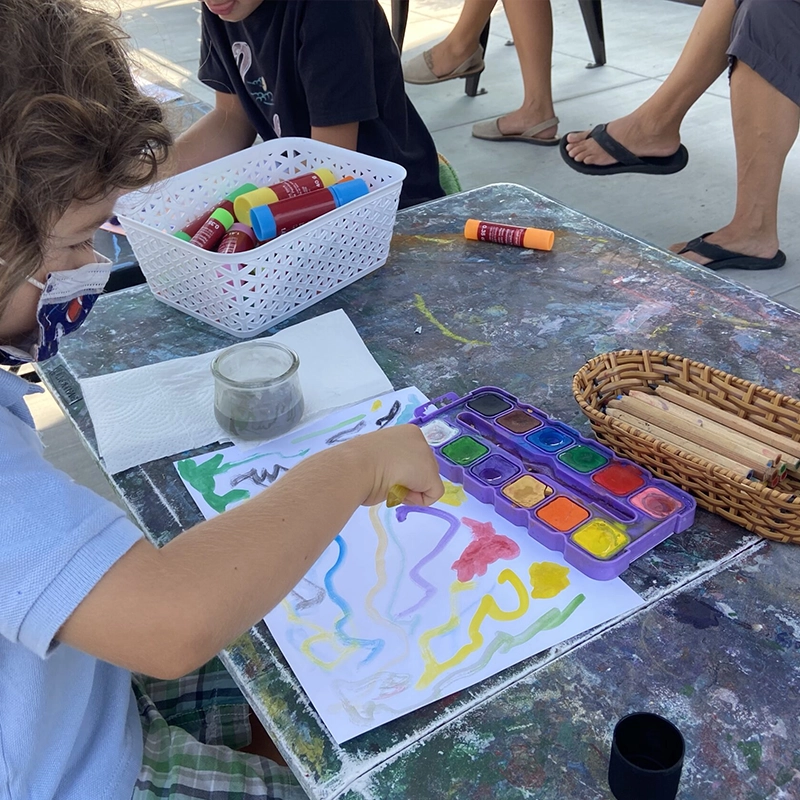
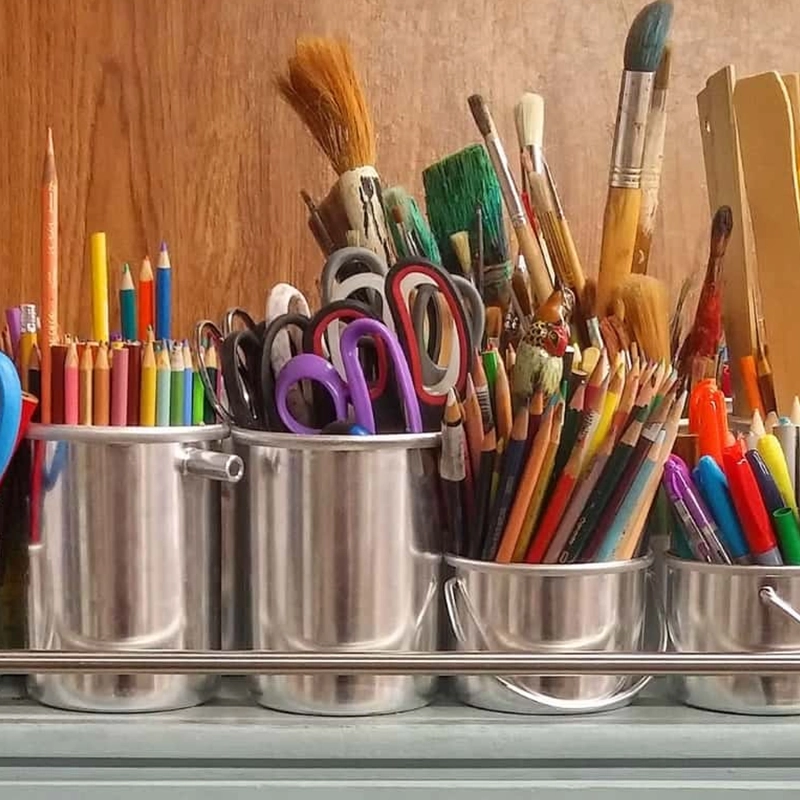
Outils et technologies d'apprentissage interactifs pour les centres d'apprentissage précoce
Les classes de la petite enfance évoluent aujourd'hui, et la technologie devient un support indispensable, non pas pour remplacer le jeu et l'apprentissage pratique, mais pour les enrichir. Bien choisis et bien encadrés, les outils technologiques contribuent à renforcer les concepts, à personnaliser l'apprentissage et à développer les compétences numériques fondamentales. Des outils spécifiques sont devenus des standards en classe dans les crèches, les écoles maternelles, les pré-maternelles et les maternelles.
- Tableau blanc interactif ou écran intelligent
Ces outils permettent aux enseignants d'animer des cours collectifs avec un support visuel, qu'il s'agisse d'une activité de traçage de lettres, d'un jeu de comptage ou d'une histoire numérique. Contrairement aux tableaux blancs traditionnels, les tableaux intelligents réagissent au toucher, diffusent des vidéos ou des applications., ce qui en fait un incontournable polyvalent dans une classe de maternelle pour l'engagement de groupe.
- Tablettes ou appareils à écran tactile
En bref, lors de séances supervisées, les tablettes facilitent les jeux de lecture, de mathématiques et de logique. Des applications préinstallées peuvent aider à la phonétique, à la reconnaissance des formes ou à la révision du vocabulaire. Les tablettes sont utiles dans les classes de maternelle, où le rythme individuel et l'interaction avec le contenu multimédia peuvent rendre l'apprentissage plus accessible.
- Stations d'écoute avec casque
La narration audio soutient les apprenants auditifs et renforce le vocabulaire. Un centre d'écoute équipé d'écouteurs résistants et d'une petite bibliothèque de livres audio offre aux enfants un autre moyen de se connecter aux histoires, notamment en préscolaire des salles de classe avec des capacités d’attention en développement.
- Caméra de documents ou présentateur numérique
Une caméra documentaire permet aux enseignants de modéliser des dessins, des écrits ou même des objets mathématiques en temps réel. C'est un outil indispensable pour les enseignants en classe, notamment pour les démonstrations en grands groupes ou les environnements virtuels hybrides.
- Minuteries visuelles et graphiques interactifs
Des technologies simples, comme les comptes à rebours numériques, facilitent la transition des enfants entre les activités. Des outils interactifs de gestion de classe, comme les tableaux de comportement affichés sur écran, favorisent l'apprentissage visuel et la cohérence des routines dans tous les types de classes de petite enfance.
La technologie n'a pas besoin de dominer la salle de classe pour être efficace. Utilisées à bon escient, ces méthodes interactives incontournables améliorer l'enseignement de base, soutenir des apprenants diversifiés et préparer les jeunes enfants au monde dans lequel ils grandissent, un monde où la culture numérique n'est plus facultative mais essentielle.
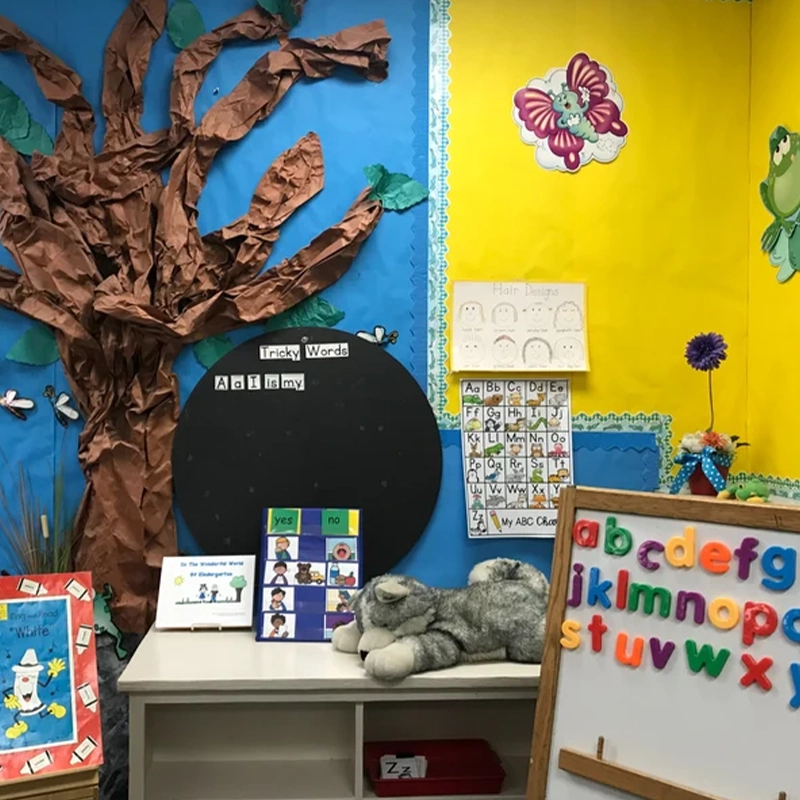
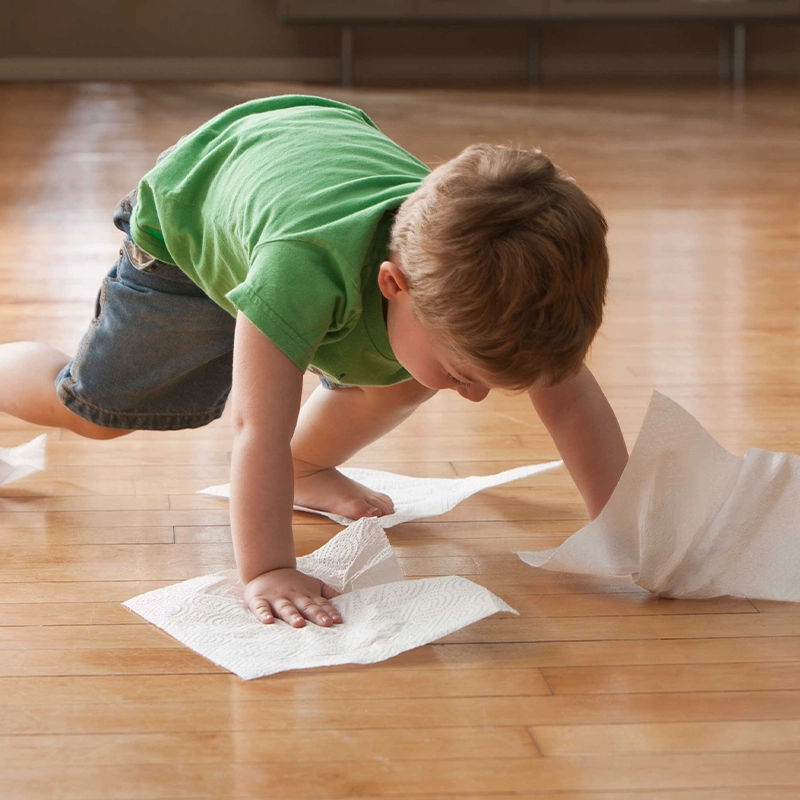
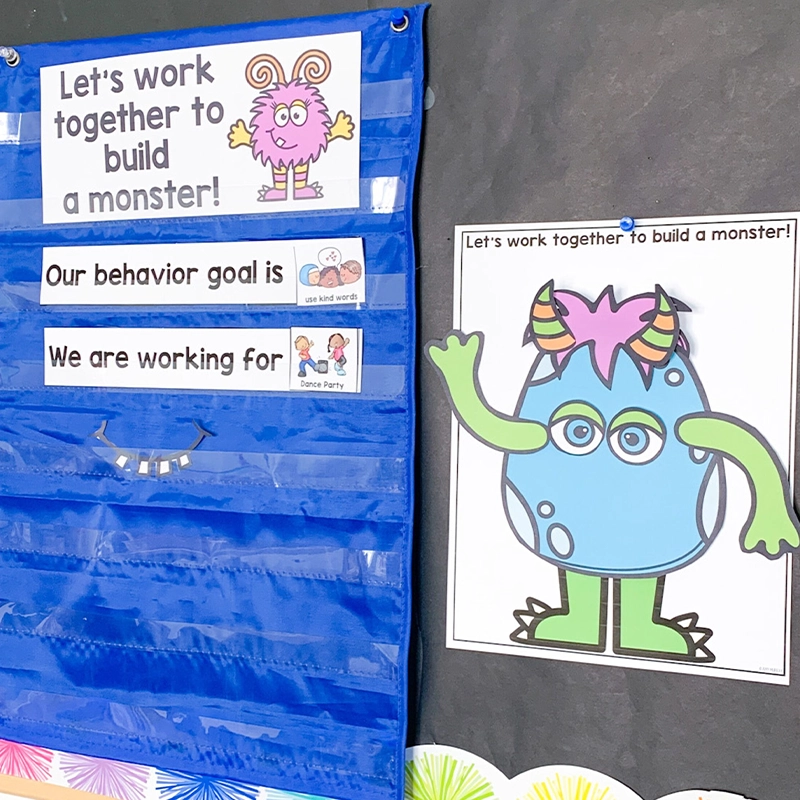
Jouets et outils d'apprentissage adaptés à l'âge pour la maternelle
Dans l’éducation de la petite enfance, le jeu n’est pas une pause dans l’apprentissage, il est Apprentissage. Des jouets et des outils de jeu adaptés aident les enfants à développer leurs compétences sociales, leur capacité à résoudre des problèmes et leur coordination motrice fine. Que vous conceviez une salle de classe pour une école maternelle, une crèche, une prématernelle ou une maternelle, un espace de jeu bien aménagé et doté de matériel adapté est un élément essentiel.
- Blocs de construction et jouets de construction
Les jouets ouverts comme les blocs de bois, les tuiles magnétiques et les briques emboîtables développent le raisonnement spatial et la créativité. Ces objets permettent aux élèves de construire de manière autonome ou collaborative, ce qui les rend parfaits pour les centres d'apprentissage en groupe et un élément incontournable de toute liste de contrôle pour les classes de maternelle.
- Jeux de tri et d'association
Les outils de tri par couleurs, formes et tailles aident les enfants à classer, comparer et reconnaître les motifs. Ils sont particulièrement utiles dans les espaces de jeux axés sur les mathématiques et font partie intégrante de la liste des indispensables de la classe de maternelle pour le développement précoce de la logique.
- Ensembles de jeux de simulation (cuisines, kits de médecin, déguisements)
Ces objets permettent aux enfants de mettre en scène des situations réelles, développant ainsi leur empathie et leurs compétences en communication. Un coin jeux de rôle simple, avec une cuisine miniature ou un coffret de médecin, est un élément essentiel d'une classe de crèche, favorisant l'apprentissage social et le développement émotionnel.
- Manipulations de motricité fine
Perles à enfiler, planches à chevilles, cubes à enfiler et pâte à modeler stimulent la force des doigts, la précision et la coordination œil-main. Ces activités sont essentielles pour préparer les enfants à l'écriture et à l'utilisation d'outils, et contribuent aux objectifs des classes de maternelle et de pré-maternelle.
- Marionnettes et accessoires de narration
Les marionnettes permettent aux enfants timides de parler avec plus d'assurance, et les accessoires rendent la narration interactive. Ces outils allient jeu et lecture, ce qui en fait des compléments utiles à votre espace lecture ou à vos séances de cercle. Ils constituent un excellent exemple d'outils indispensables pour les enseignants et favorisent le développement émotionnel et langagier.
- Stations de jeu autoguidées
Installez des bacs ou des étagères où les enfants peuvent choisir librement leurs activités pendant les heures de garderie. Identifiez chaque activité avec des photos et des mots pour faciliter son identification. Ces postes d'apprentissage autonomes développent non seulement les compétences décisionnelles, mais sont également essentiels à l'organisation de la classe pour un quotidien fluide.
Dans tout environnement de petite enfance, cet espace de jeu doit être clairement délimité, avec un sol souple, un mobilier flexible et un accès libre aux jouets. Une rotation régulière du matériel est nécessaire pour maintenir l'intérêt et développer différentes compétences. Les enseignants des classes d'éducation spécialisée ou d'apprentissage de la vie quotidienne peuvent également intégrer des jouets sensoriels dans cet espace.
Le jeu n'est pas seulement une source de plaisir, il est fondamental. Les enseignants peuvent créer une classe qui allie plaisir et apprentissage au quotidien en choisissant des jouets de qualité et adaptés à leurs besoins.
Équipements de sport et de jeux physiques pour la maternelle et la garderie
Les enfants ont besoin de bouger. L'activité physique en classe favorise le développement de la motricité globale, l'autorégulation et le bien-être émotionnel. En garderie, en maternelle, en pré-maternelle et en maternelle, un espace dédié à l'activité physique est non seulement agréable, mais indispensable. Une aire de jeu bien aménagée encourage l'engagement actif, la prise de risques en toute sécurité et les interactions de groupe joyeuses.
- Balles souples et sacs de haricots
Simples et sûrs, les sacs de fèves permettent de lancer, d'attraper, de faire rouler et de lancer des objets à l'intérieur. Ils peuvent également servir de sièges pour les jeux en groupe. Les sacs de fèves sont des incontournables en maternelle pour développer la coordination sans risque de blessure.
- Poutres d'équilibre et tremplins
Les poutres d'équilibre basses et portables ou les marchepieds en mousse aident les enfants à améliorer leur équilibre, leur maîtrise corporelle et leur perception spatiale. Ils sont parfaits pour classes de pré-maternelle et préscolaire avec des apprenants actifs qui ont besoin de mouvement pour rester concentrés.
- Cordes à sauter et cerceaux
Idéals pour les jeux en extérieur, ces outils légers sont également utiles à l'intérieur pour des jeux contrôlés. Ils encouragent l'endurance, le rythme et le travail d'équipe, des éléments clés des classes de garderie.
- Tapis de mouvement et blocs d'escalade
Les tapis en mousse souples et modulaires et les structures d'escalade permettent de sauter, ramper et grimper en toute sécurité à l'intérieur. Ils sont particulièrement utiles dans les classes d'éducation spécialisée, où l'intégration sensorimotrice fait souvent partie du quotidien.
- Outils de parcours d'obstacles
Utilisez des cônes, des tunnels, des anneaux et des coussins d'équilibre pour créer des parcours d'obstacles intérieurs captivants. Cela favorise l'esprit critique, la planification et la persévérance. Pour les élèves de maternelle en particulier, cela apporte un défi physique structuré dans l'espace d'apprentissage.
- Matériaux de musique et de mouvement
Les foulards, les bâtons de rythme et les jeux de danse figés associent la musique au développement de la motricité globale. Ces articles transforment les transitions et les pauses en occasions de développer des compétences et de libérer l'énergie : de véritables indispensables pour les enseignants et les enseignants qui souhaitent gérer l'énergie en classe.
Dans la mesure du possible, aménagez un coin ouvert ou un tapis dépliant dans la classe pour les activités de mouvement. Pour les espaces plus restreints, des équipements pliables ou des chariots mobiles équipés d'accessoires de jeu actif facilitent l'intégration de l'apprentissage physique dans la routine quotidienne, quel que soit le contexte de la petite enfance.
Le mouvement est bénéfique pour le cerveau autant que pour le corps. Avec les bons outils et l'espace adéquat, votre classe peut devenir un lieu où les enfants peuvent sauter, tourner, s'étirer et grandir.
Outils de récompenses et de renforcement positif
Les jeunes enfants s'épanouissent grâce au renforcement positif. En classe, les récompenses ne se résument pas à des récompenses : elles sont des outils pour encourager l'effort, renforcer les attentes et développer la conscience émotionnelle. Que vous enseigniez en crèche, en maternelle ou en école maternelle, mettre en place des systèmes simples pour soutenir la motivation est l'un des éléments les plus pratiques et efficaces pour un enseignant.
- Tableaux d'autocollants et tableaux d'étoiles
Un choix classique pour suivre la participation, la bienveillance ou l'accomplissement des tâches. La visualisation des progrès aide les enfants à comprendre les objectifs et à rester motivés. Les tableaux, personnalisables ou groupés, sont essentiels. indispensables pour les systèmes de comportement en classe.
- Systèmes de jetons ou de points
Utilisez des jetons ou des points physiques pour récompenser les comportements quotidiens : suivre les consignes, partager et ranger. Les enfants peuvent les échanger contre de petits privilèges ou des récompenses. Cette approche renforce le sens des responsabilités et introduit les premiers concepts mathématiques en maternelle et en prématernelle.
- Récompenses mystères ou boîtes de prix
Un élément de surprise ajoute de l'excitation. Remplissez une petite boîte de cadeaux à petit prix (gommes, crayons, figurines) et laissez les enfants choisir. En maternelle, cette méthode est particulièrement efficace pour renforcer les transitions et les routines.
- Bracelets ou certificats de comportement
Des bracelets colorés ou des certificats imprimés peuvent récompenser les moments de gentillesse, d'effort ou d'amélioration. Ces formes concrètes et visibles de reconnaissance sont un excellent moyen d'impliquer les parents et de renforcer la communication entre l'école et la maison.
- Récompenses de groupe et objectifs de classe
Encouragez la collaboration en fixant des objectifs de comportement pour toute la classe, comme organiser une fête avec du pop-corn ou une activité spéciale. Ces éléments sont indispensables pour les nouveaux enseignants et contribuent à créer une communauté et des attentes communes dès le début de l'année.
- Outils de langage positif et repères visuels
Des cartes ou des affiches simples avec des phrases comme « Bravo ! » ou « Tu es un ami formidable » renforcent l'ambiance positive en classe. Ces objets subtils, mais efficaces, sont indispensables pour une communication respectueuse et encourageante.
Adoptez des systèmes de récompense simples, cohérents et visuels. Affichez les attentes en matière de comportement et les progrès dans un endroit visible, et veillez à ce que les systèmes soient inclusifs pour tous les apprenants, y compris les enfants en éducation spécialisée ou en classes de préparation à la vie active, qui peuvent avoir besoin d'objectifs ou de soutiens adaptés.
Le soutien comportemental doit être encourageant et non conditionnel. Lorsque les enfants sont vus, reconnus et valorisés, ils se sentent en sécurité pour prendre des risques, réessayer et grandir.
Règles de classe et aides visuelles
La structure crée la sécurité. Dans les classes de petite enfance, les attentes communiquées, appuyées par des repères visuels cohérents, aident les enfants à comprendre les routines, à s'autoréguler et à se sentir en sécurité. Que ce soit en crèche, en maternelle ou en pré-maternelle, afficher les règles et les horaires de la classe dans des formats simples et adaptés à l'âge des enfants est un élément fondamental de la classe.
- Affiches sur les règles simples de la classe
Utilisez des affiches avec des phrases courtes et des images claires, telles que « Utilisez des mots gentils », « Lève la main » ou « Marche à pied seulement ». Elles doivent être affichées à hauteur des yeux et consultées régulièrement. En maternelle ou en éducation spécialisée, les supports visuels aident à combler les lacunes de compréhension liées au développement.
- Horaires visuels quotidiens
Affichez la routine quotidienne avec des images : cercle, goûter, ateliers, jeux extérieurs, etc. Cela renforce la notion de temps en maternelle et contribue à réduire l'anxiété lors des transitions. Des bandes Velcro ou magnétiques permettent d'ajuster facilement l'horaire selon les besoins.
- Indices de transition et outils de compte à rebours
Signalez les changements à venir avec des horloges illustrées, des sabliers ou des applications de compte à rebours visuel. Ces outils sont indispensables pour les classes de maternelle, où les enfants apprennent à connaître le temps et bénéficient d'une structure pédagogique douce.
- Tableaux de niveau et de volume de voix
Affichez des tableaux indiquant les niveaux de bruit attendus dans différentes situations, des murmures pendant la lecture aux voix dans la cour de récréation. Ces tableaux aident les enfants à moduler leur niveau d'énergie et sont particulièrement utiles en garderie ou dans les classes multi-âges.
- Tableaux des tâches en classe
Attribuez des rôles comme chef de file, aide-collation ou présentateur météo. Utilisez des cartes nominatives et des visuels pour indiquer les responsabilités. Ces tableaux favorisent l'esprit de communauté, l'engagement et la fierté, ce qui en fait des outils indispensables pour les enseignants au quotidien.
- Tableaux des sentiments et roues des émotions
Soutenez l'apprentissage socio-émotionnel grâce à des tableaux qui aident les élèves à identifier leurs émotions. Utilisez des visages ou des visuels de type émojis. Ce sont des outils essentiels pour développer la communication et l'empathie dans les classes de compétences essentielles à la vie quotidienne ou d'éducation spécialisée.
Ces supports visuels doivent être placés dans les zones très fréquentées : près de l'entrée, sur le tapis de la salle de classe ou dans la bibliothèque de la classe. Privilégiez des designs simples, cohérents et faciles à mettre à jour. Dans les classes multilingues, des panneaux bilingues peuvent également être ajoutés pour favoriser l'inclusion.
Les cours se déroulent plus facilement lorsque les attentes sont visuelles, cohérentes et renforcées. Les enfants sont plus enclins à coopérer, non pas par crainte des règles, mais parce qu'ils les comprennent.
Articles de confort pour le repos et le calme à la garderie et à la maternelle
Si l'apprentissage précoce est riche en mouvements et en émotions, les enfants ont aussi besoin de temps pour se reposer, se ressourcer et se rééquilibrer. Qu'il s'agisse d'une sieste programmée ou de quelques instants de calme après une partie de jeu en plein air, les espaces de calme sont essentiels dans les classes de maternelle, de crèche, de pré-maternelle et de maternelle. Aménager un coin détente avec le matériel adapté aide les enfants à se ressourcer émotionnellement, physiquement et mentalement.
- Tapis de sieste ou lits bas
Dans les garderies à temps plein, des tapis en mousse souple ou des petits lits bébé offrent aux enfants un espace défini pour s'allonger. Privilégiez les options avec des surfaces lavables et des draps-housses pour une meilleure hygiène. En crèche et en maternelle, ces éléments sont indispensables au bien-être en classe.
- Oreillers et couvertures légères
Pour plus de confort et de sécurité, des oreillers légers et des couvertures moelleuses (étiquetés individuellement) aident les enfants à s'installer plus facilement. Même dans les classes sans sieste, ils peuvent être utilisés dans des coins lecture ou des zones de détente, notamment dans les classes d'éveil à la vie quotidienne ou d'éducation spécialisée.
- Machines à bruit blanc ou bandes sonores apaisantes
Une musique douce, des sons de la nature ou un léger bruit blanc peuvent aider à signaler une transition vers le sommeil. Maintenez un volume bas et constant. Cet outil aide les enfants qui ont des difficultés de traitement sensoriel et figure parmi les incontournables des classes de crèche.
- Éclairage tamisé et indices visuels de calme
Utilisez des lampes, des guirlandes lumineuses ou des rideaux pour atténuer l'éclairage dans les espaces de repos. Des éléments visuels comme des panneaux « zone de silence » ou des images d'animaux endormis contribuent à renforcer les attentes sans parler, ce qui est essentiel dans les environnements préscolaires pour développer la compréhension verbale.
- Jouets silencieux ou articles sensoriels
Les livres aux pages souples, les objets à manipuler ou les coussins lestés offrent aux enfants un support pour se détendre. Même en maternelle, sans sieste, ces objets offrent une pause et aident à réguler la concentration et les émotions.
- Routine de repos cohérente
Utilisez un planning simple et visuel pour préparer le moment de calme : rangez, choisissez un endroit, prenez un objet et allongez-vous tranquillement. Ce rituel renforce la sécurité et la prévisibilité, ce qui en fait un incontournable pour les enseignants, gage de rythme et de fluidité en classe.
Des zones de calme doivent être aménagées dans des coins éloignés des zones de passage. Utilisez des tapis ou des étagères pour délimiter l'espace et permettez aux enfants de signaler lorsqu'ils ont besoin de temps pour eux. Dans les classes inclusives, cet espace peut également servir de zone de régulation sensorielle.
Le repos n'est pas facultatif, il est un élément de développement. Offrir un espace paisible apprend aux enfants à écouter leur corps et donne aux enseignants un moment pour préparer la salle à la prochaine phase d'apprentissage.
Votre salle de classe idéale est à un clic !
Trousse de premiers secours et fournitures de sécurité pour une classe de maternelle
La sécurité n'est pas un élément essentiel dans une classe de petite enfance, c'est la base. Les enseignants doivent être prêts à gérer les accidents mineurs, à protéger les enfants des risques évitables et à créer un environnement où chaque élève, y compris ceux ayant des besoins médicaux, se sent en sécurité. Que vous organisiez une garderie, une école maternelle, une prématernelle ou une classe de maternelle, ces impératifs de santé et de sécurité sont essentiels.
- Trousse de premiers secours entièrement approvisionnée
Cela devrait inclure des pansements adhésifs, des lingettes antiseptiques, des compresses de gaze, des gants, un thermomètre numérique et des compresses froides. Veillez à les ranger hors de portée des enfants, mais à portée des adultes. Parmi les indispensables de la classe, c'est l'un des rares outils que vous espérez ne pas utiliser, mais que vous devez toujours avoir sur vous.
- Classeur de contacts d'urgence
Un classeur visible et organisé (ou une sauvegarde numérique) contenant toutes les informations médicales des élèves, les alertes d'allergies et les coordonnées des tuteurs. Affichez les informations essentielles sur les allergies près des stands de collations ou de la cuisine. Cet outil est vital pour les crèches et les classes de maternelle, où les problèmes de santé apparaissent souvent en premier.
- Essentiels de la sécurité des enfants
Couvrez les prises électriques, fixez les étagères hautes et évitez les risques d'étouffement mineurs. Rangez les produits de nettoyage dans des armoires verrouillées. Dans les classes d'éducation spécialisée ou de préparation à la vie quotidienne, soyez particulièrement attentif aux dangers sensoriels tels que les bords tranchants ou les lumières clignotantes.
- Fournitures sanitaires
Les lingettes désinfectantes, le gel hydroalcoolique (à l'usage des enseignants), les mouchoirs et les recharges de savon contribuent à freiner la propagation des maladies. Les enseignants doivent également maintenir une routine d'hygiène pour le matériel partagé. Ces articles sont indispensables au quotidien dans l'enseignement post-pandémique.
- Visuels et plans d'exercices d'urgence
Utilisez des cartes ou des affiches visuelles pour guider les élèves lors des exercices (incendie, confinement, tremblement de terre, etc.). Pratiquez chaque mois, surtout en maternelle, pour familiariser les élèves et réduire l'anxiété. Marquez clairement les sorties et attribuez les rôles (par exemple, chef de file, contrôleur des portes).
- Formation à la sécurité et protocoles d'incident
Les enseignants et les assistants doivent être formés aux techniques de base de réanimation cardio-pulmonaire et de premiers secours. Un protocole simple et détaillé de réponse aux incidents doit être affiché. Il s'agit d'une obligation administrative pour les classes de nouveaux enseignants, car les politiques varient selon les centres ou les districts.
Les dispositifs de sécurité doivent être discrets mais présents, s'intégrant parfaitement à l'environnement de la classe tout en restant accessibles. Pour des classes inclusives, des supports de sécurité visuels comme des panneaux d'arrêt verts/rouges ou des instructions illustrées peuvent faire toute la différence.
Lorsque les enfants se sentent physiquement en sécurité, ils sont libres d'explorer et de communiquer. Et lorsque les enseignants sont préparés, les incidents mineurs ne se transforment pas en urgences majeures.
Produits de nettoyage pour l'hygiène en maternelle et en jardin d'enfants
La propreté dans les environnements d'apprentissage précoce ne se limite pas à l'ordre : c'est aussi une question de santé, de sécurité et de bonnes habitudes à adopter. En maternelle, en crèche, en pré-maternelle et en maternelle, les enfants apprennent encore à gérer leur hygiène personnelle, et les salles de classe doivent être équipées pour soutenir cet apprentissage tout en minimisant la propagation des germes. Ces mesures de nettoyage et d'hygiène indispensables contribuent à créer un espace plus sûr et plus sain pour tous.
- Produits de nettoyage sans danger pour les enfants
Utilisez des sprays nettoyants et des lingettes désinfectantes non toxiques et sans parfum, étiquetés comme étant sans danger pour les enfants. Rangez-les dans des armoires verrouillées lorsque vous ne les utilisez pas. Ces produits font partie des fournitures scolaires indispensables, notamment pour les surfaces communes et les jouets à contact fréquent.
- Stations de lavage des mains ou repères visuels
Assurez-vous que les lavabos sont accessibles et toujours approvisionnés en savon et en essuie-tout. En l'absence de lavabos, installez des distributeurs de désinfectant pour les mains surveillés par les enseignants. L'affichage de guides illustrés de lavage des mains à proximité de chaque zone de lavage est particulièrement utile dans les crèches et les maternelles où les routines sont encore en cours de formation.
- Mouchoirs et poubelles
Munissez chaque espace d'activité de mouchoirs et d'une petite poubelle. Intégrez le nettoyage aux transitions (par exemple, jeter un mouchoir, se laver les mains). Ces routines renforcent l'hygiène et la responsabilité, des éléments essentiels en classe de maternelle pour les groupes.
- Sacs ou caddies de fournitures individuels
Pour réduire le partage des germes, attribuez à chaque enfant un ensemble personnel d'articles à usage fréquent (ciseaux, crayons, colle). et rangez-les dans des sacs ou des bacs étiquetés. Ce sont des outils pratiques indispensables pour les enseignants. pour soutenir l’hygiène dans les centres d’art, d’écriture et sensoriels.
- Tapis de sol et surfaces lavables
Utilisez des tapis lavables et des tapis en vinyle sous les zones de désordre (par exemple, les espaces dédiés aux arts plastiques, aux collations, aux tables à eau). Privilégiez les meubles faciles à nettoyer. Ces éléments sont essentiels à l'organisation de la classe et facilitent les routines de désinfection rapides entre les activités.
- Programme hebdomadaire de nettoyage en profondeur
Instaurez une routine d'hygiène en classe comprenant le nettoyage hebdomadaire des tables, la désinfection des jouets et le lavage régulier des objets en tissu. Une liste de contrôle dans les salles de classe des nouveaux enseignants permet d'éviter de manquer des tâches importantes pendant les semaines chargées.
Envisagez d'impliquer les enfants dans des tâches de nettoyage simples pour encourager l'appropriation : essuyer les tables, mettre des objets dans une poubelle ou rapporter les caddies. Utilisez des tableaux visuels pour montrer que « nous contribuons tous à la propreté de notre classe ».
Une salle de classe propre n’est pas seulement une question de présentation : elle protège la santé, favorise l’indépendance et modélise des habitudes de soins tout au long de la vie et le respect de l’espace partagé.
Les indispensables de la classe par groupe d'âge
L'aménagement d'une salle de classe varie selon la tranche d'âge que vous accueillez. Vous trouverez ci-dessous un tableau comparatif des éléments essentiels d'une salle de classe à tous les stades de l'apprentissage, de la petite enfance à la préparation à l'école primaire. Utilisez-le pour planifier, prioriser et personnaliser l'aménagement de votre salle de classe.
| Groupe d'âge | Étape éducative | Salle de classe typique | Les incontournables | Mots-clés SEO ciblés |
|---|---|---|---|---|
| 0–2 ans | Nourrisson/Jeune enfant | Chambre pour bébé / Chambre pour tout-petits | Centres d'apprentissage, zones de jeux de rôle, jouets d'alphabétisation de base et stations créatives | les indispensables de la classe des nourrissons, les indispensables de la classe des tout-petits |
| 2–3 ans | École maternelle précoce | Salle pour tout-petits ou pour enfants d'âge préscolaire | Manipulations simples, étiquettes basées sur des images, signaux émotionnels, stockage sécurisé | les indispensables de la classe des tout-petits, les indispensables de la classe préscolaire |
| 3–4 ans | École maternelle / Pré-K | Classe préscolaire | Centres d'apprentissage, zones de jeux de rôle, jouets d'alphabétisation de base, stations créatives | les indispensables de la classe préscolaire, les indispensables de la classe pré-maternelle |
| 4–5 ans | Maternelle | Classe de maternelle | Sièges de groupe structurés, affichage des règles de la classe, outils axés sur les compétences | les incontournables de la classe de maternelle |
| 5–6 ans | Maternelle de transition / Préparation au CP | Cours de passerelle K/1 | Matériel d'alphabétisation précoce, bacs de travail autonome, outils de régulation émotionnelle | Les indispensables de la classe de première année et les indispensables de la maternelle de transition |
| 6–8 ans | Élémentaire inférieur (1re et 2e années) | Classe élémentaire | Systèmes de bureau, visuels spécifiques à chaque sujet, zones de tâches pour les partenaires, tableaux d'ancrage | Les indispensables de la classe de 2e année, les indispensables de la classe élémentaire |
| 8 à 10 ans | Élémentaire supérieur (3e à 5e année) | Classe élémentaire supérieure | Bibliothèques organisées, matériel de manipulation mathématique, intégration technologique, sièges flexibles | Les indispensables de la classe de 3e année, les indispensables de la classe de 4e année, les indispensables de la classe de 5e année |
| 10–12 ans | Début du collège (6e année) | Salle d'apprentissage transitionnel/autodirigé | Stockage individuel, suivi des objectifs, appareils numériques, affichages spécifiques à un sujet | Les indispensables de la classe de 6e année, les indispensables de la classe de collège |
Conclusion
Créer une classe de maternelle efficace nécessite une planification minutieuse et une bonne sélection d'articles indispensables qui répondent aux besoins physiques, émotionnels et éducatifs des enfants.
- Choisir des fournitures indispensables, durables et sûres
Choisissez des fournitures de qualité, durables et conçues pour les enfants. Investir dans du mobilier robuste, des rangements fiables et des outils pédagogiques de qualité garantit que votre classe sera bien équipée pour l'année scolaire. Des matériaux durables réduisent également les remplacements fréquents, ce qui permet de gagner du temps et d'économiser de l'argent.
Une salle de classe propre et organisée favorise un environnement d'apprentissage stimulant et réduit le stress des enseignants et des élèves. Un nettoyage régulier, des rangements étiquetés et des zones dédiées aux différentes activités rendent la classe efficace et agréable.
En incorporant ces Les indispensables de la classe de maternelle permettent aux enseignants de créer une classe sûre, stimulante et enrichissante. Cette approche globale offre aux enfants les outils et l'environnement nécessaires pour explorer, apprendre et s'épanouir en toute confiance.
FAQ
Quels sont les éléments indispensables pour une classe de maternelle pour les nouveaux enseignants ?
Commencez par des meubles adaptés aux enfants, du matériel artistique de base, une trousse de premiers secours et des systèmes d'organisation simples. Des autocollants, des tableaux visuels et des routines quotidiennes sont essentiels pour gérer les comportements et les transitions en douceur.
Comment organiser efficacement une petite classe préscolaire ?
Utilisez des étagères ouvertes, des bacs étiquetés et des meubles polyvalents comme des bancs de rangement. Définissez clairement les zones à l'aide de tapis ou d'indices visuels, et privilégiez des schémas de circulation simples.
Ces éléments indispensables à la classe conviennent-ils à la fois à la garderie et à la maternelle ?
Oui. Bien que les quantités et les plages horaires puissent varier, tous les outils et zones mentionnés dans ce guide s'appliquent aux établissements préscolaires, aux garderies, aux pré-maternelles et aux jardins d'enfants.
Ai-je besoin de technologie dans une classe de maternelle ?
Bien que non obligatoires, des technologies simples comme les tablettes, les tableaux blancs ou les chronomètres visuels peuvent améliorer l'enseignement et la gestion de la classe. Utilisez la technologie de manière réfléchie et toujours sous la supervision de l'enseignant.
De quelles fournitures de sécurité chaque classe devrait-elle disposer ?
Une trousse de premiers secours bien garnie, un classeur de contacts d'urgence, des produits d'hygiène et des outils de sécurité pour enfants sont indispensables. Affichez clairement les protocoles d'urgence et pratiquez régulièrement des exercices.
Comment puis-je intégrer des espaces sensoriels ou de calme dans ma classe ?
Utilisez un éclairage tamisé, des jouets silencieux, des objets lestés et des repères visuels. Ces espaces sont bénéfiques pour tous les élèves, en particulier ceux en milieu d'éducation inclusive ou spécialisée.
